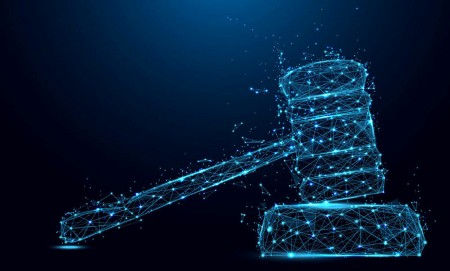June 15, 2020 – What does the near future of the legal profession look like? Advances in artificial intelligence (AI), data analytics, the move to the cloud, and the streamlining of court and legal procedures are changing the profession and judicial processes rapidly. This is a marked change from a profession that has been demonstrably slow when it comes to adopting technology.
Nonetheless, today law firms are relying less on paper, storing the data they gather electronically, using cloud services, streamlining their legal activities by using automation tools, and improving client communication and services using online portals. The use of these technologies is allowing legal firms to become more sustainable, efficient, and ultimately more profitable.
What follows is a description of some of the technologies that are changing the practice of law in the 21st century.
Big Data and Advanced Analytics
Analytics technology has seen huge advancements over the years and is now widely used in many industries and organizations, including law firms. It is the digitization of the massive amounts of documentation used by the profession that is making data analytics possible. Before digitization case files and judgments were largely stored on paper. The closest thing to automation for law firms were subscriptions to WestLaw and Nexis/Lexis. But now law firms can research legal matters by comprehensive searches of massive amounts of digitized case files and court proceedings. With this technology lawyers can use other online tools like AI to see the connection between similar cases. They can utilize predictive analytics to help them plan their dockets and caseloads, and even help in determining the size of settlements on behalf of clients.
Artificial Intelligence
AI technologies make it possible to mine digitized data. Among the tools lawyers can use are:
- Machine Learning is a powerful AI tool for data mining whether using it to find key facts within legal documents, or for improving operational efficiencies within a law firm. Machine learning can spot discrepancies in contracts that lawyers may miss because its algorithms can ferret out common patterns and inconsistencies in massive amounts of text. In other words, machine learning saves lawyers enormous amounts of time in document search related to cases and contracts.
- Deep Learning takes machine learning to the next level because it can be a predictor of the future when it comes to discerning patterns and trends when analyzing digitized content.
- Natural Language Processing (NLP) applies algorithms capable of understanding written and spoken language. This is the technology used when you type a query into Google Serch, or when you use Amazon Alexa, Siri, or Google Home. NLP can retrieve information based on interpreting a question you ask. It can extract information from all kinds of files whether text or audio. And it can convert what it hears to text and save it.
- Computer Vision processes visual data finding a face in the crowd, or seeing something that human eyes might miss. Computer vision can also be used for surveillance.
Going Paperless
Climate change has been an important topic in recent years and many organizations are taking their first steps to become more sustainable and green. Legal firms in the past have been enormous producers of paper waste in terms of legal documents. Digitization of historic documents and the use of electronic documents has changed current legal practice.
More recently, law firms have discovered virtual platforms in the cloud enabling them to store documents and files online, and eliminating the need for physical files in the office. Using some of the other tools mentioned above makes it possible to organize and manage an entire practice with documents stored remotely. For example, conveyancing software can be used to streamline and automate transactions and facilitate electronic signatures, reducing the need for printed documents and helping law firms save time and money.
Online Client Portals
Clients, traditionally, when contacting legal representatives have used the phone or email to get updates on a case. Getting through to lawyers and poor communication has been a common complaint. Significant developments in recent years, however, are making it possible to improve lawyer-client relationships and enhance communications.
The advent of legal firms using online portals is providing clients with convenient access to information on legal matters of import to them. This is increasing transparency and taking pressure off legal professionals dealing with large caseloads. Web-based portals provide a secure place for clients to share sensitive data while minimizing the risk of it being stolen, lost, or corrupted. According to experts at the Accellis Technology Group, “a client portal is valuable to firms of all sizes and in all practices of law. They improve efficiency and streamline all client/external facing procedures.”
A Last Word
The pace of adoption of new technologies within legal practice is speeding up from the days not long ago when lawyers were still dictating notes to legal assistants, or typing on DOS-based computers using WordPerfect. Surprisingly, there are still some that remain dedicated to these older technologies and practices which reflects the conservative nature of the profession and a tradition of unwillingness to change. And as much as the technologies described above represent where the profession is rapidly going, there are other technologies around the corner such as virtual and augmented reality, and robotics that are likely to be added to legal practice in the near future.
















